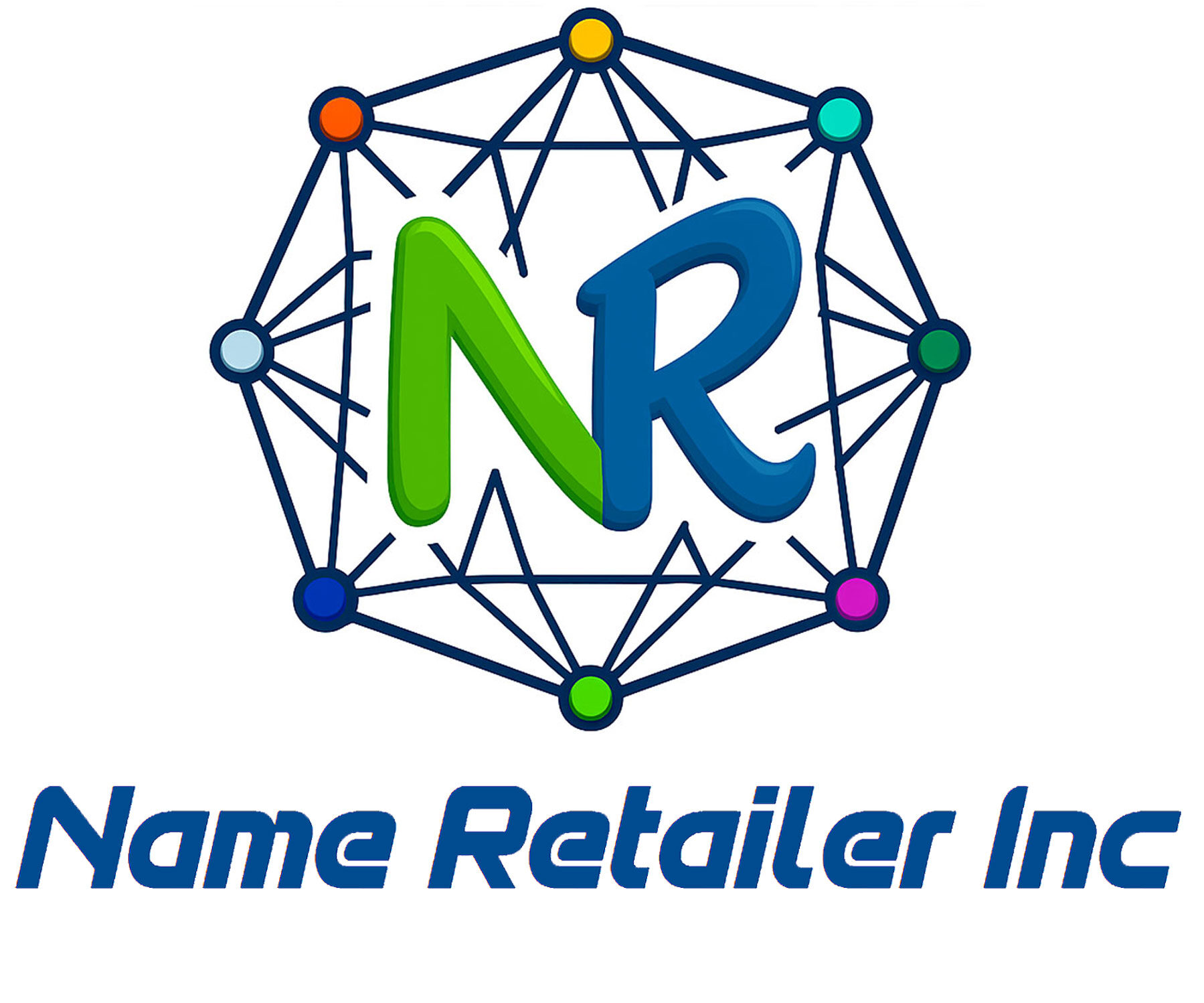Guest Post Marketplace
Guest post marketplaces have transformed how we approach link building and content marketing. These platforms connect content creators with website owners who want high-quality guest posts, making it easier for both sides to find what they need.
We designed this guide for digital marketers, SEO professionals, and entrepreneurs who want to understand or enter the guest post service industry. Whether you’re searching for the best guest posting service for your campaigns or considering launching your own platform, we’ll walk you through everything you need to know.
We’ll start by exploring what makes these marketplaces valuable for businesses and why they’ve become essential tools in modern SEO strategies. Then we’ll dive into the key features that separate successful platforms from the rest, covering everything from user experience to quality control systems. Finally, we’ll show you how to build and manage your own guest post marketplace, including proven strategies for attracting top-tier writers and publishers while maintaining the content standards that keep clients coming back.
Understanding Guest Post Marketplaces and Their Business Value

What guest post marketplaces are and how they operate
Guest post marketplaces serve as digital bridges connecting content creators with website owners who need quality articles. We see these platforms operating like sophisticated matchmaking services, where writers showcase their expertise and publishers list their sites with specific requirements and pricing.
The operational model is straightforward yet powerful. Writers create profiles highlighting their niche expertise, writing samples, and rates. Publishers register their websites, specifying content categories, quality standards, and budget ranges. The marketplace facilitates these connections through advanced filtering systems, allowing both parties to find perfect matches based on domain authority, topic relevance, and budget constraints.
Most platforms charge commission fees ranging from 10-20% per transaction, creating sustainable revenue streams while providing value to both sides. We’ve observed that successful marketplaces often include escrow services, ensuring payments are secure and content meets agreed-upon standards before funds are released.
Quality guest post services have evolved beyond simple content exchanges. They now incorporate sophisticated vetting processes, automated plagiarism checking, and performance tracking tools that help users measure the impact of their content marketing investments.
Key benefits for content creators and website owners
Content creators gain access to diverse opportunities without spending countless hours pitching individual websites. We’ve seen freelance writers increase their monthly income by 40-60% simply by leveraging marketplace exposure rather than relying solely on direct client acquisition.
For writers, these platforms offer:
- Consistent workflow with reduced downtime between projects
- Transparent pricing structures and payment protection
- Portfolio building opportunities across various niches
- Access to high-authority websites they might never reach independently
Website owners benefit equally from streamlined content acquisition. Instead of managing multiple freelancer relationships, they can buy guest posts from pre-vetted writers who understand their industry requirements. This efficiency translates to significant time savings and often better content quality.
Publishers using the best guest posting service platforms typically experience:
- Reduced content creation overhead costs
- Access to specialized writers they couldn’t afford full-time
- Consistent content publishing schedules
- Improved SEO performance through diverse writing styles and perspectives
Revenue potential and monetization opportunities
The monetization landscape for guest post marketplaces presents multiple revenue streams. We’ve analyzed successful platforms and identified several key income sources that create robust business models.
| Revenue Stream | Percentage of Total Revenue | Growth Potential |
|---|---|---|
| Transaction Commissions | 60-70% | High |
| Premium Memberships | 15-20% | Medium |
| Featured Listings | 10-15% | High |
| Additional Services | 5-10% | Very High |
Commission-based earnings form the foundation, but we’ve noticed that platforms offering premium memberships see improved user retention. These subscriptions typically provide benefits like reduced commission rates, priority support, and enhanced profile visibility.
Featured listing fees create additional income while providing value to users wanting increased exposure. Writers can pay for top placement in search results, while publishers can highlight their websites to attract better content creators.
The most innovative platforms are expanding into complementary services like content strategy consulting, SEO audits, and social media promotion. These value-added services command premium pricing and create deeper client relationships.
Market size and growth trends in content marketing
Content marketing expenditure continues its upward trajectory, with businesses allocating an average of 26% of their total marketing budgets to content creation. We’re witnessing a market that reached $42 billion in 2022 and projects to exceed $107 billion by 2026.
This growth directly benefits guest post services as companies seek cost-effective ways to scale their content production. The demand for quality guest posts has increased by 35% year-over-year, driven by businesses recognizing the SEO and brand awareness benefits of strategic content placement.
Remote work trends have expanded the global talent pool, allowing platforms to connect businesses with skilled writers worldwide. We’re seeing increased demand for specialized niches like fintech, healthcare, and emerging technologies, where expert writers can command premium rates.
The shift toward quality over quantity has elevated the value proposition for professional buy guest post services. Businesses now prefer investing in fewer, high-impact pieces rather than churning out generic content, creating opportunities for premium marketplace positioning.
Essential Features That Make Guest Post Marketplaces Successful

User-friendly platform interface and navigation
When we design our guest post marketplace, we make the interface our top priority because nobody wants to struggle through a confusing platform. We focus on creating clean, intuitive dashboards that get users exactly where they need to go without wasting time clicking through endless menus.
Our approach centers on simplifying the user journey. Writers need to easily upload their portfolios, browse available opportunities, and track their submissions. Publishers want quick access to writer profiles, content samples, and campaign management tools. We build separate but connected interfaces that serve each group’s specific needs while maintaining visual consistency across the platform.
Search functionality becomes crucial when dealing with thousands of writers and publishers. We implement robust filtering systems that allow users to sort by niche, domain authority, pricing, turnaround time, and geographic location. Smart categorization helps publishers find writers who actually understand their industry, whether they’re looking for tech bloggers or lifestyle content creators.
Mobile responsiveness isn’t optional anymore. Most users check their accounts on phones, so we optimize every element for smaller screens. This means simplified navigation menus, touch-friendly buttons, and streamlined forms that work perfectly on any device.
Quality control systems and content verification
Content quality separates professional marketplaces from amateur platforms, so we build comprehensive verification systems that protect both sides of every transaction. We start by implementing multi-layer screening processes for writers joining our platform.
Our verification includes portfolio reviews where we manually examine writing samples to assess grammar, style, and subject matter expertise. We also run plagiarism checks on submitted samples using advanced detection software that catches both direct copying and paraphrased content. This initial screening weeds out low-quality writers before they can damage our marketplace reputation.
For ongoing quality control, we create rating systems where publishers evaluate every delivered piece. These ratings include criteria like content originality, adherence to guidelines, timeliness, and overall satisfaction. Writers who consistently receive poor ratings face account restrictions or removal from the platform.
We also implement content screening tools that automatically flag potentially problematic submissions. These systems check for keyword stuffing, excessive promotional language, and content that might violate publisher guidelines. While automation handles the first screening, our human moderators review flagged content to make final decisions.
Secure payment processing and escrow services
Financial security builds trust in our marketplace, especially for transactions between strangers across different countries. We integrate with established payment processors like Stripe or PayPal to handle the technical aspects while maintaining our own escrow system for added protection.
Our escrow service holds payments until both parties confirm successful completion. When a publisher accepts a project, we immediately secure their payment in escrow, giving writers confidence they’ll get paid for completed work. The publisher knows their money stays protected until they receive satisfactory content.
We offer multiple payment options including credit cards, bank transfers, and digital wallets to accommodate users worldwide. Currency conversion happens automatically for international transactions, with transparent fee structures that everyone understands upfront.
Dispute resolution becomes essential when deals go wrong. We maintain dedicated support teams that review contested transactions, examine delivered content, and communicate with both parties to reach fair resolutions. Clear terms of service outline what constitutes acceptable work and grounds for payment release or refunds.
Advanced matching algorithms between writers and publishers
Smart matching technology transforms our platform from a simple directory into an intelligent service that connects the right people automatically. We analyze multiple data points to suggest optimal partnerships that benefit everyone involved.
Our algorithm considers writing style compatibility by analyzing past work samples and publisher preferences. We look at topic expertise, examining writers’ portfolios to identify their strongest subject areas and match them with relevant publisher needs. Geographic factors also matter for local businesses seeking region-specific content.
We track success patterns to improve future matches. When certain writer-publisher combinations produce excellent results, our system learns these preferences and suggests similar partnerships. Budget compatibility ensures we don’t waste anyone’s time by suggesting partnerships that won’t work financially.
Real-time matching notifications alert users when new opportunities arise that fit their criteria perfectly. Writers receive instant alerts about relevant projects while publishers get notified when ideal candidates join the platform. This proactive approach keeps our marketplace active and reduces the time between project posting and completion.
Building Your Guest Post Marketplace Platform

Technical requirements and development considerations
Building a robust guest post marketplace platform requires careful planning of our technical infrastructure. We need to start with a scalable architecture that can handle multiple user types – content creators, publishers, and administrators – all working simultaneously on our platform.
Our backend should support user authentication, content management, payment processing, and communication systems. We recommend using cloud-based solutions like AWS or Google Cloud Platform to ensure scalability and reliability. The database design becomes critical here, as we’ll be managing complex relationships between users, content submissions, payment records, and performance analytics.
When designing the platform, we must consider real-time features like messaging between writers and publishers, notification systems for status updates, and dashboard analytics. These features directly impact user experience and platform stickiness. We should implement a RESTful API architecture to support future mobile applications and third-party integrations.
Security cannot be an afterthought. We need SSL certificates, data encryption, secure payment gateways, and regular security audits. Since we’re handling sensitive information like payment details and content intellectual property, compliance with data protection regulations becomes mandatory.
The platform should also support multiple content formats, file uploads for images and documents, and SEO analysis tools. Integration with popular content management systems helps publishers streamline their workflow when working with our guest post service.
Creating effective user registration and verification systems
Our registration process needs to balance simplicity with security. We’ve found that lengthy registration forms increase abandonment rates, so we focus on collecting essential information first and gathering additional details through progressive profiling.
For writers joining our platform, we require portfolio samples, writing experience verification, and skill assessments. This helps us maintain quality standards and match writers with appropriate opportunities. Publishers need verification of website ownership, traffic statistics, and editorial guidelines documentation.
We implement a multi-step verification process that includes email confirmation, phone number verification, and manual review for high-value accounts. Social media integration can speed up registration while providing additional verification layers through established online profiles.
Our user profiles should showcase relevant metrics – for writers, this includes writing samples, client reviews, and completion rates. Publishers display website metrics, content categories, and response times. These profiles help both sides make informed decisions when buying guest posts or offering services.
We also maintain tiered user levels based on performance history. New users start with limited access, while verified, high-performing users gain access to premium features and higher-value opportunities. This system encourages quality participation while protecting our community from spam or low-quality submissions.
Implementing content submission and review workflows
Our content workflow system manages the entire lifecycle from initial pitch to final publication. We start with a structured submission process where writers can browse available opportunities, submit proposals, and communicate with publishers about requirements.
The review process includes multiple checkpoints: initial proposal screening, content quality assessment, plagiarism checking, and publisher approval. We use automated tools for basic quality checks like grammar, readability scores, and duplicate content detection, combined with human review for subjective elements like topic relevance and brand alignment.
We’ve designed status tracking that keeps all parties informed throughout the process. Writers see proposal status, feedback requests, and payment milestones. Publishers track submission progress, can request revisions, and approve final content. Administrators monitor overall platform health and intervene when disputes arise.
Our revision system allows structured feedback loops between publishers and writers. Instead of endless back-and-forth emails, we provide specific commenting tools, tracked revision requests, and clear approval workflows. This streamlines communication and reduces project completion times.
Payment integration connects directly to our workflow system. We hold funds in escrow upon project acceptance and release payments based on predefined milestones. This protects both parties and ensures our guest post services maintain professional standards.
The platform includes dispute resolution mechanisms for situations where projects don’t meet expectations. We provide mediation tools, clear refund policies, and escalation procedures that protect the integrity of our marketplace while maintaining positive relationships with quality users.
Attracting and Retaining Quality Writers and Publishers

Competitive pricing strategies that benefit both parties
We understand that pricing can make or break a guest post marketplace. Our approach centers on creating win-win scenarios where writers earn fair compensation while publishers receive genuine value for their investment. We’ve found that transparent, tiered pricing models work best – they give both sides clear expectations and room to grow.
Our pricing structure typically includes three main tiers: basic guest posts for emerging websites, premium placements for established domains, and enterprise-level content for high-authority sites. This way, writers can start building their portfolio on smaller sites and gradually move up to higher-paying opportunities as they prove their skills.
We also implement dynamic pricing based on domain authority, niche relevance, and content requirements. A tech blog with high DA commands different rates than a general lifestyle blog. Writers appreciate this because it means their expertise in specialized niches gets rewarded appropriately. Publishers benefit because they’re not overpaying for basic placements while still having access to premium options when needed.
Building trust through transparent communication tools
Trust forms the backbone of any successful guest post service. We’ve built our platform around open communication channels that keep everyone informed throughout the entire process. Our messaging system allows direct communication between writers and publishers, but we also monitor conversations to ensure professional standards.
We provide detailed writer profiles that showcase previous work, writing samples, and client feedback. Publishers can review portfolios before making decisions, while writers can see publication guidelines and response times upfront. This transparency eliminates surprises and builds confidence on both sides.
Our escrow system protects both parties – funds are held securely until content delivery and approval. We also maintain public review systems where both writers and publishers can rate their experiences. These reviews help newcomers identify reliable partners and encourage everyone to maintain high standards.
Incentive programs and loyalty rewards for active users
Active users are the lifeblood of our marketplace, so we’ve designed reward systems that encourage consistent participation. Our writer loyalty program offers increasing commission rates based on monthly output and quality scores. Top performers can earn up to 15% higher rates than newcomers, creating real motivation for excellence.
For publishers, we offer volume discounts and priority support for regular clients. Those who consistently purchase guest posts receive better rates and first access to premium writers. We also run seasonal promotions and bulk purchase incentives that make our platform more attractive than competitors.
Our referral program rewards users who bring new participants to the platform. Writers earn bonuses for referring other quality writers, while publishers receive credits for bringing new publication opportunities. This organic growth strategy has proven more effective than traditional advertising.
Marketing strategies to grow your user base
Growing our user base requires targeted approaches for two distinct audiences. For writers, we focus on content marketing through writing-focused communities, freelance job boards, and social media groups where writers gather. We share success stories, tips for getting started, and transparency reports about average earnings.
Our publisher acquisition strategy revolves around demonstrating ROI. We create case studies showing how guest posting improves search rankings and drives traffic. We also attend digital marketing conferences and maintain partnerships with SEO agencies who recommend our services to their clients.
We’ve found that word-of-mouth remains our strongest growth driver. When writers consistently earn good money and publishers see real results, they naturally recommend us to their networks. We support this by making sharing easy – providing referral links, social media content, and even co-branded materials for our top users to share with their professional contacts.
Managing Quality Control and Content Standards

Establishing Clear Guidelines and Content Requirements
We’ve learned that creating comprehensive content guidelines forms the backbone of any successful guest post marketplace. Our content standards need to address multiple layers, starting with basic technical requirements like word count minimums, proper formatting, and SEO optimization. When we work with the best guest posting service providers, we notice they always prioritize platforms with crystal-clear expectations.
We establish specific categories for different types of content, whether it’s news articles, how-to guides, opinion pieces, or industry analysis. Each category gets its own set of requirements. For instance, we might require how-to articles to include actionable steps, relevant screenshots, and practical examples. Opinion pieces need proper sourcing and expert credentials.
Our content quality checklist covers originality requirements, plagiarism thresholds, grammar standards, and readability scores. We define what constitutes high-quality backlinks versus spammy ones, since many clients buy guest posts specifically for link-building purposes. We also outline prohibited content types, including adult material, gambling, pharmaceuticals, and controversial topics that could damage publisher relationships.
We create detailed style guides covering tone, voice, and brand alignment. Publishers appreciate when we maintain consistent quality across all submissions, making their editorial process smoother. Our guidelines also specify technical SEO requirements, meta descriptions, image optimization, and internal linking best practices.
Implementing Automated and Manual Review Processes
We’ve built a multi-tiered review system that combines automated screening with human expertise. Our automated tools first scan submissions for plagiarism, grammar issues, readability problems, and basic formatting compliance. This initial filter catches roughly 40% of problematic submissions before they reach human reviewers.
Our automated system checks for keyword stuffing, suspicious link patterns, and content that might violate platform policies. We use AI-powered tools to assess content relevance and quality scores, flagging pieces that fall below our thresholds. This helps us maintain efficiency when processing hundreds of guest post service requests daily.
The manual review process involves experienced editors who evaluate content depth, accuracy, and overall value. We train our reviewers to spot subtle issues like thin content disguised as comprehensive guides or promotional pieces masquerading as educational material. They also verify author credentials and ensure content aligns with target publication standards.
We implement a three-strike system for writers who consistently submit subpar content. First-time violations get educational feedback, second strikes trigger closer scrutiny of future submissions, and third violations result in account suspension. This graduated approach helps writers improve while protecting our platform reputation.
Our review timeline promises feedback within 48-72 hours for standard submissions and 24 hours for premium guest post services. We provide detailed rejection reasons and improvement suggestions, turning the review process into a learning opportunity for content creators.
Handling Disputes and Managing Platform Reputation
We’ve developed a structured dispute resolution process that protects both writers and publishers while maintaining platform integrity. When conflicts arise over content quality, payment issues, or revision requests, we step in as neutral mediators with clear escalation procedures.
Our dispute handling starts with automated communication tools that help parties resolve minor issues independently. For complex disputes, we assign dedicated account managers who review submission history, communication logs, and platform guidelines to make fair decisions. We typically resolve 85% of disputes within five business days.
We maintain transparent feedback systems where both writers and publishers rate their experiences. These ratings help future users make informed decisions when they buy guest post opportunities. We actively monitor these ratings to identify problematic users and intervene before issues escalate.
Our reputation management strategy includes regular platform audits, publisher satisfaction surveys, and content quality assessments. We showcase success stories and testimonials from satisfied users while addressing negative feedback constructively. We also maintain relationships with industry publications and SEO communities to ensure our platform remains well-regarded.
We implement strict policies against fake reviews, sock puppet accounts, and other reputation manipulation tactics. Our monitoring systems flag suspicious rating patterns and unusual account behavior. We believe transparency and genuine quality control build stronger long-term relationships than artificial reputation boosting.

We’ve explored how guest post marketplaces create meaningful connections between content creators and website owners while delivering real business value. From understanding the core mechanics to identifying essential features like user-friendly interfaces, transparent pricing, and robust quality control systems, these platforms succeed when they prioritize both sides of the marketplace equation. Building a successful platform requires careful attention to technical infrastructure, user experience, and the delicate balance of attracting quality participants.
The real magic happens when we focus on community building and maintaining high content standards. By implementing strong vetting processes, clear guidelines, and fair dispute resolution systems, we can create an environment where writers produce their best work and publishers receive content that truly serves their audiences. Our recommendation is simple: start small, listen to your users, and never compromise on quality. The guest post marketplace space has room for platforms that genuinely care about connecting the right people with the right opportunities, and success comes to those who make that connection their top priority.




